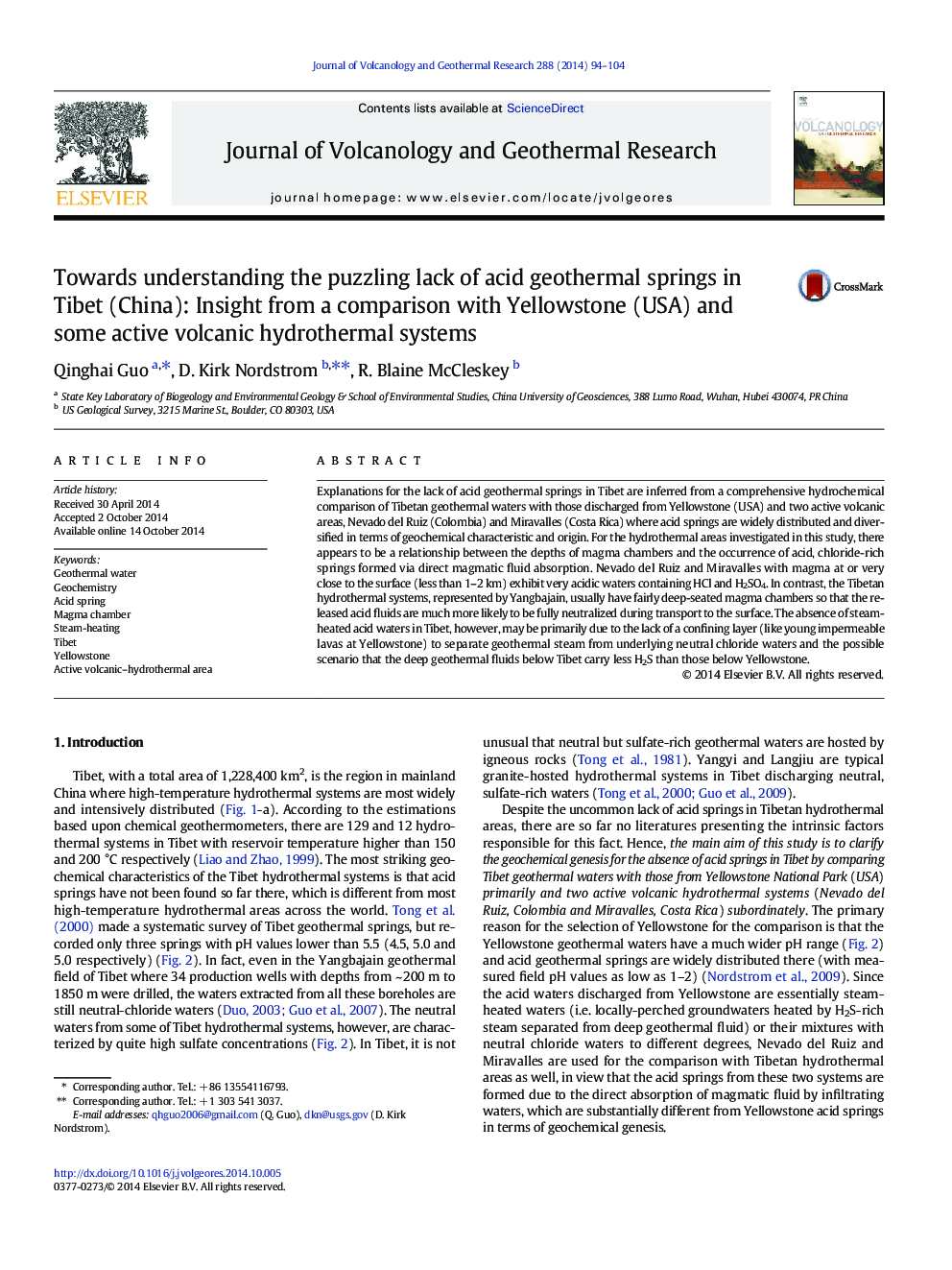| کد مقاله | کد نشریه | سال انتشار | مقاله انگلیسی | نسخه تمام متن |
|---|---|---|---|---|
| 4713036 | 1638334 | 2014 | 11 صفحه PDF | دانلود رایگان |
• Acid geothermal springs don't exist in Tibet.
• Formation of acid springs via direct uptake of magmatic fluid depends on depth of magma chamber.
• Multiple factors are responsible for the lack of steam-heated acid waters in Tibet.
Explanations for the lack of acid geothermal springs in Tibet are inferred from a comprehensive hydrochemical comparison of Tibetan geothermal waters with those discharged from Yellowstone (USA) and two active volcanic areas, Nevado del Ruiz (Colombia) and Miravalles (Costa Rica) where acid springs are widely distributed and diversified in terms of geochemical characteristic and origin. For the hydrothermal areas investigated in this study, there appears to be a relationship between the depths of magma chambers and the occurrence of acid, chloride-rich springs formed via direct magmatic fluid absorption. Nevado del Ruiz and Miravalles with magma at or very close to the surface (less than 1–2 km) exhibit very acidic waters containing HCl and H2SO4. In contrast, the Tibetan hydrothermal systems, represented by Yangbajain, usually have fairly deep-seated magma chambers so that the released acid fluids are much more likely to be fully neutralized during transport to the surface. The absence of steam-heated acid waters in Tibet, however, may be primarily due to the lack of a confining layer (like young impermeable lavas at Yellowstone) to separate geothermal steam from underlying neutral chloride waters and the possible scenario that the deep geothermal fluids below Tibet carry less H2S than those below Yellowstone.
Journal: Journal of Volcanology and Geothermal Research - Volume 288, 1 November 2014, Pages 94–104
